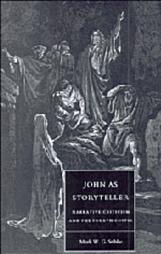Continuing from the Jesus and Dionysus (2): Comparison of John’s Gospel and Euripides’ Play . . . .
It would be a mistake to confine our comparison of the Gospel of John’s Jesus with Euripides’ play. Bacchae has no reference to the Dionysian miracle of turning water into wine (see the first post in this series for details) yet numerous commentators on the Gospel’s Cana Wedding miracle of turning water into wine have pointed to resonances with the Greek counterpart.
Further, it would be shortsighted to dismiss any comparison of the Gospel’s Jesus with Dionysus on the grounds that there is no obvious link between Jesus’ crucifixion and the dismemberment (the sparagmos) of the enemy of Dionysus.
Suffering and Power

In fact, when the god’s enemy undergoes humiliation and dismemberment he is really sharing in or identifying with the sufferings of the god. His name is, after all, Pentheus, with verbal resonances with “pathos” (suffering); and we have seen that the purpose of the god is to come to relieve the suffering of humanity through his gift of wine, and the play itself speaks constantly of the suffering that Pentheus must undergo as punishment for his attempt to thwart the purpose of the god. It is through the suffering of Pentheus (identifying with the sufferings of the god) that the god who comes in apparent weakness, as an effeminate mortal, is exalted — his victorious and divine power is displayed for all!
The “discovery of Dionysiac echoes in John’s story as a whole” (Stibbe, p. 2) — in particular with the miracle of Cana, (the identification, one might add, of Jesus with the vine itself), the binding of Jesus, the dialogue with Pilate and the pathos of Jesus’ crucifixion — requires us to look beyond the tragedy itself and to look at all that the myth conveyed.
Indeed, there are other myths where Dionysus inflicted the same punishment upon others apart from Pentheus. King Lycurgus of Thrace also opposed the worship of Dionysus. Dionysus punished him by sending him into a mad frenzy during which he dismembered his own son; subsequently his citizens pulled him apart limb by limb in order to remove the curse of Dionysus from their land.
An early form of the myth is that Dionysus was originally born to Persephone, queen of the underworld (Hades). (It is not insignificant, for our purposes, that some of the myths tell us Zeus intended this new child to be his heir.) The jealous wife of Zeus (Hera) who had fathered the child persuaded the evil Titans to destroy the infant. Attempting to avoid capture by the pursuing Titans Dionysus changed himself into a bull, but was caught in this form and pulled limb from limb. The Titans then devoured these dismembered pieces of flesh. Zeus punished them by destroying them with thunderbolts, and from the ashes humankind was created, a mixture of the evil of Titans and the divinity of Dionysus.
Twice Born, from Below and Above
Through all of that chaos one piece of Dionysus was rescued, his heart, which was returned to Zeus. Zeus used the heart (the myths and means by which he did this vary) to give Dionysus a second birth, so he became known as the “twice-born” god.
A later version of the myth, the one that lies behind the play by Euripides, is that Zeus had fathered Dionysus with the mortal woman, Semele. Again Hera sought to kill the child, this time before it was born, by challenging Semele to see Zeus in all his glory. When Zeus showed himself in all his godliness Semele, of course, was struck dead. But Zeus rescued the child from her womb and sewed it into his thigh until it was ready to be born a second time, from the god himself.
Anyone familiar with the Gospel of John does not need to be reminded of Jesus explaining the mystery of being born a second time from above. Continue reading “Jesus and Dionysus (3)”

